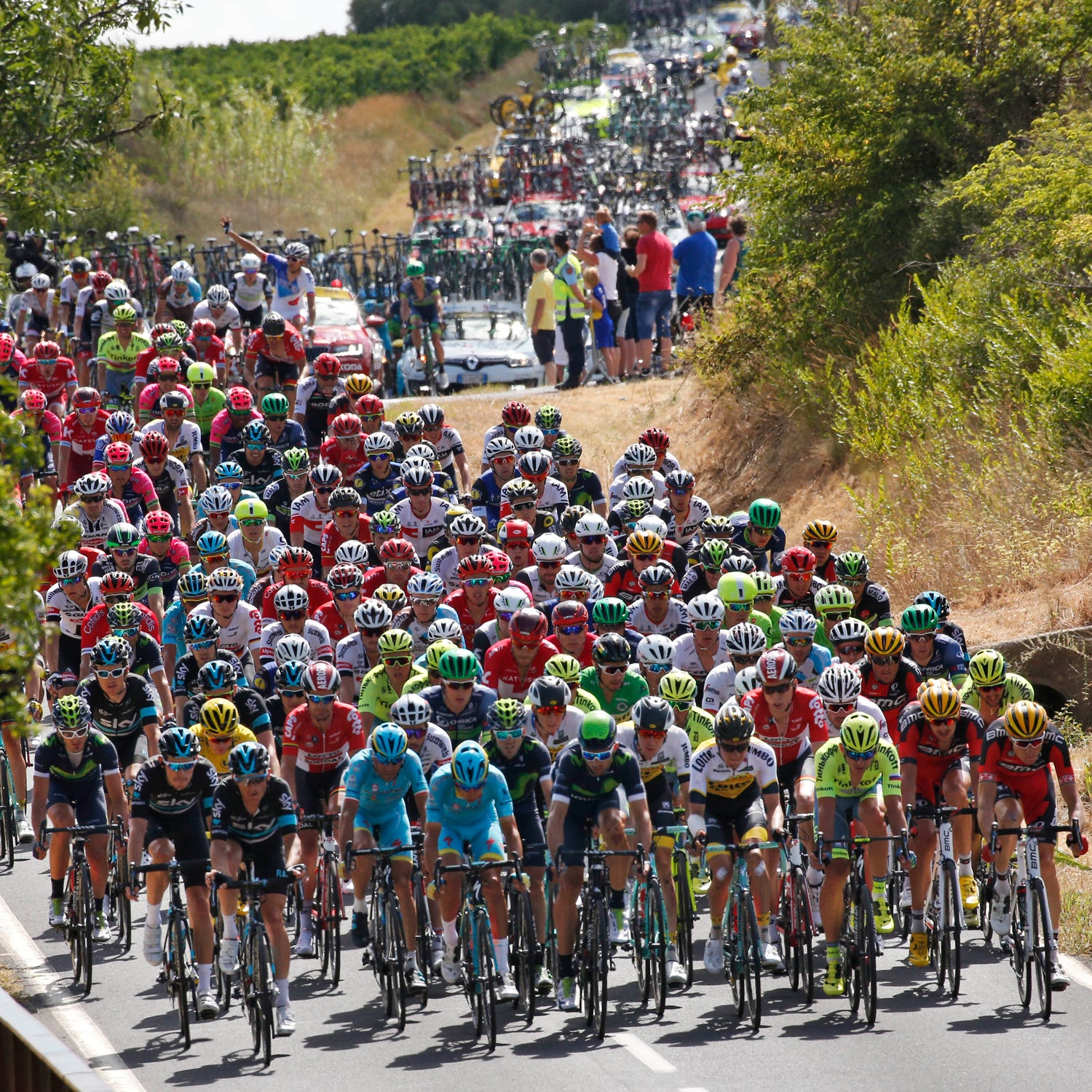With the GC race at the Tour de France stalled out beneath Team Sky’s interminable grind, the folks over at Exercisebike.net apparently got as bored as we have and started doing some back-of-the-napkin noodling. Basically, they wondered, with 198 riders covering 2,187 course miles over three weeks, how much energy are they producing? And what could you do with all of that power? The answers provide some fun factoids. They also make us think that there should be some way to hook up our trainers and start harnessing all that output to power our daily lives. You can , but these are the numbers that surprised us most.
Clean Energy
Perhaps the most compelling stat is how the energy generated by all the Tour riders collectively stacks up to other fuel sources. Collectively, the energy generated by the racers over the course of the tour is about the same as that of 5,300 pounds of coal, 371 gallons of gasoline, 51,500 cubic feet of natural gas, or almost 27,000 hours of solar power production. Backing that out, that means that a single rider produces the equivalent of 1.87 gallons or 136 hours of solar power.
Energy Hogs
The study speaks to how energy hungry we are as Americans. Tour power could run the average French home for 663 days, or nearly two years, but an American one for just 170 days. Similarly, while the output from Tour races could run the Eiffel Tower, which is lit by 20,000 six-watt bulbs, for over three days, it would only keep the lights on at the Empire State Building for around 50 minutes. Guess we’ll have to get more Americans riding.
Food for Thought
On a more banal level, the study equates the output of a single rider over the three weeks of the Tour to normal household appliance usage. The average Tour racer could light a 100-watt bulb for 257 hours, run a washing machine for 52 hours, or grill toast in a toaster for 32 hours. The same amount of energy would run a hair-dryer for just 13 hours, though presumably it would be easier to fluff that coif with just a few minutes in the saddle.
Road Trip
Exercisebike.net says that the energy generated by the Tour racers would be enough to power a Tesla road trip across the U.S. some 6.5 times. That sounds like a lot, but it’s probably only a quarter of that—just 1.5 coast-to-coast miles— While we’re impressed with all the other stats, this one seems underwhelming given that it’s three weeks of energy from 200 riders for just a single, passenger car trip. It would be far more fuel efficient—and nearly as quick—to just pedal yourself across the country, as Lael Wilcox did recently on her 18-day winning cruise on the TransAm .


